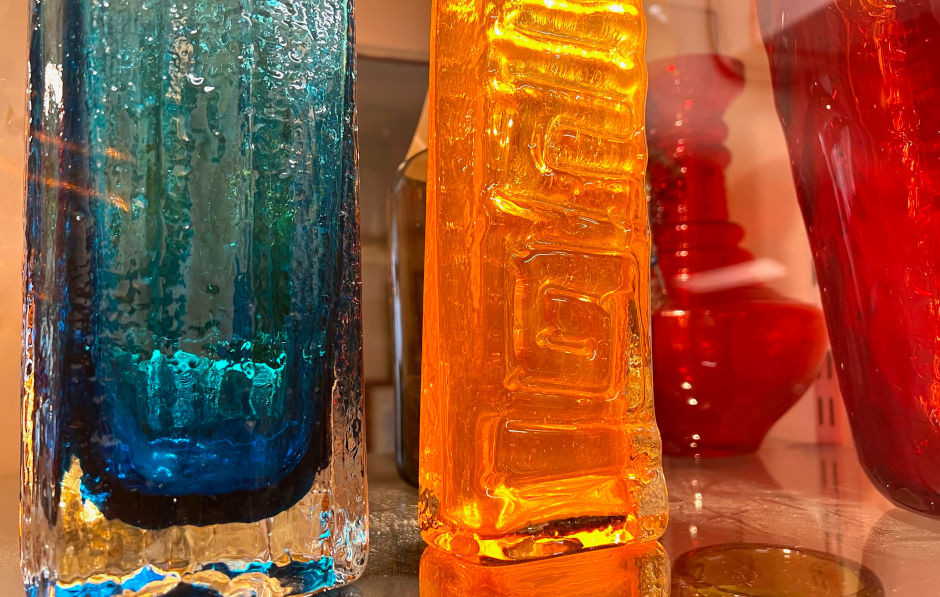
In a recent article, we looked at the importance of 20th century glass and examined some of the more notable names in glass production. In this guide we identify glassware of interest to both novice and seasoned collectors alike, and what they should look for.
The market for 20th century glass collectables has fluctuated but in recent years, we have seen an uptake in collectors for this area, due in part to the current trend for clean, uncluttered lines in more modern homes.
Whitefriars glass
No article about 20th century glassware can ignore the importance of Whitefriars, which epitomises English design. The company was chosen to exhibit at the 1951 Festival of Britain, the aim of which was to showcase British design in post-war Britain. A few years later, Geoffrey Baxter joined the company and created the now iconic Textures range of pieces.
However, Whitefriars is not the only name for collectors to look out for, and Britain is not the only country to have produced some incredible artists and designers. Post-war optimism inspired young glass designers around the world, from the USA and Scandinavia to Czechoslovakia, while established, traditional factories such as Murano in Italy started to experiment with new techniques.
Art glass
The term ‘Art Glass’ typically refers to pieces made purely to be decorative or sculptural, rather than practical or functional. A fine example of art glass is Carnival glass, produced by the Fenton Glass Company as a cheaper alternative to the Favrile range by Tiffany. Carnival glass is characterised by a sheen that changes colour when viewed from different angles, the result of the production process where metallic salts are sprayed onto the glass before it is fired. Carnival glass is highly decorative, often with scalloped or crimped edges and is so called as it was often given as prizes on carnival, or fairground, stalls.
What to collect
The novice collector of mid-century glass can choose to specialise in pieces from the same designer or factory, or may wish to focus on particular techniques or countries of origin. In this respect, 20th century glass is a good area to start collecting, as the options are numerous, but instantly recognisable. Murano glass designers created a sommerso (meaning submerged) technique where coloured glass is encased between clear layers and pieces by experts in this technique such as Flavio Poli, Dino Martens and Flavio Bianconi now command healthy prices.
By contrast, Nordic glass displays a more abstract form and is responsible for the bubble glass technique where bubbles intentionally appear within the surface of the glass (Finland), and the Ariel technique (Scandinavia) where images are suspended within glass walls. While in the UK, Whitefriars designer, Baxter, captured the essence of mid-century Pop Art with his Drunken Bricklayer, Banjo and Bark patterns.
What to look for when buying 20th century glass
A new collector may find it difficult to identify designer or factory as a lot of 20th century glass pieces are missing labels and have no signatures. Where this is the case, look for style and condition. Does the piece have a pleasing aesthetic or an iconic design? Examine the condition closely – damage can reduce the value of a piece by up to 90% - checking for cracks and chips. Look also for pontil scars on the base which indicates a hand blown glass rod has been broken off after completion. Fire polished rims will be smooth and rounded, another indicator of quality workmanship. Brighter coloured examples will always fetch a higher price than the same piece in clear glass as they stand out, representing the era and are therefore more desirable.
To avoid the growing number of fakes on the market, always buy from trusted and experienced sellers, like the dealers at Hemswell, who can authenticate and provide provenance for their items. A selection of our range of 20th century glass can be viewed online, with many more products on display in our centres.